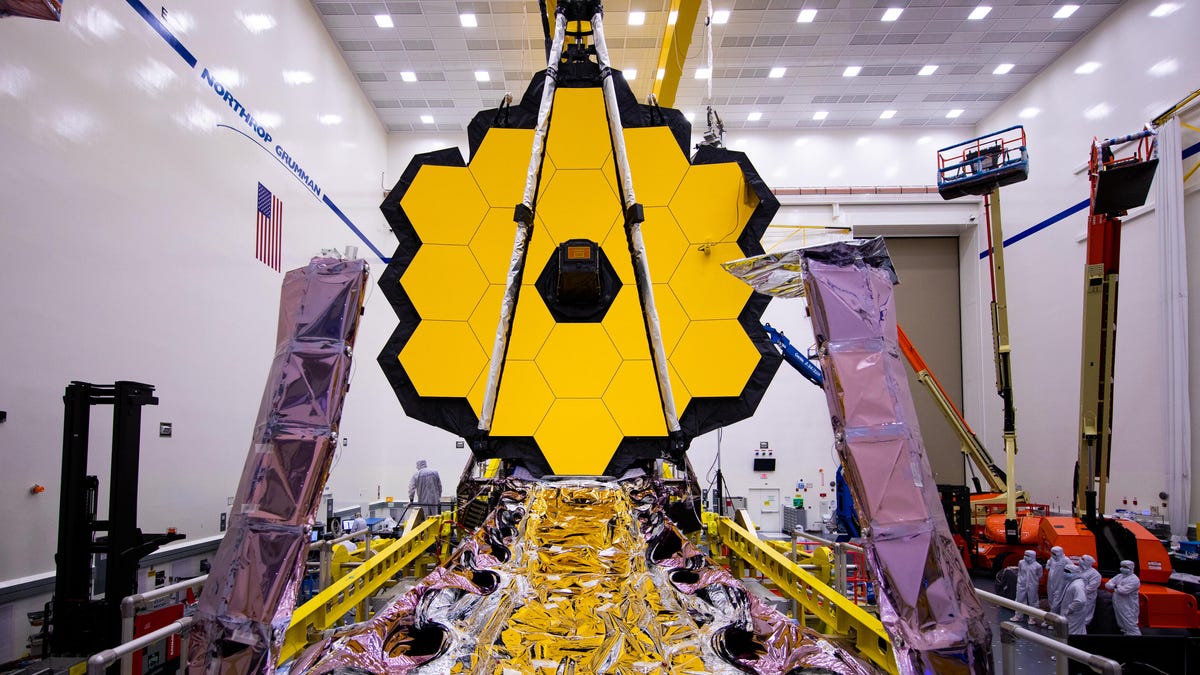NASA Has a Plan to Protect James Webb Telescope From Micrometeoroids
The agency unveils a new scheme for protecting JWST from fast-flying space dust.

The James Webb Space Telescope during a test deployment of its primary mirror in March 2020.
Space isn't empty. The next-gen James Webb Space Telescope has to sweat the small stuff: dust-sized particles that can impact its shiny golden mirrors. On Tuesday, NASA shared a new plan aimed at protecting Webb from damage by these micrometeoroids.
Webb's designers knew the telescope was going to get hit, so the observatory is engineered to hold up under strikes. However, the telescope got smacked in May by an "unavoidable" micrometeoroid that was larger than expected. Webb is still operating just fine despite the injury, but the dust strike prompted NASA to think through ways to mitigate future damage.
"We have experienced 14 measurable micrometeoroid hits on our primary mirror, and are averaging one to two per month, as anticipated," Webb lead mission systems engineer Mike Menzel said in a statement. "The resulting optical errors from all but one of these were well within what we had budgeted and expected when building the observatory."
NASA pulled together a group of optics and micrometeoroid experts to analyze the concerning impact. The group decided it was "a rare statistical event." So basically JWST was unlucky. To reduce the danger from similar hits in the future, Webb will aim to face away from areas designated as "micrometeoroid avoidance zones."
The zones are areas where micrometeoroids would be more likely to strike the telescope's mirrors head on at a high velocity. "This does not mean that these areas of the sky cannot be observed, only that observations of those objects will be more safely made at a different time in the year when Webb is in a different location in its orbit," NASA said.
The micrometeoroid mitigation adjustments will go into effect for Webb's second year of science. The telescope delivered its spectacular first science images in July and has been on a roll ever since, showing us the wonders of the cosmos, from galaxies merging to eye-popping nebulae. Keeping the sensitive mirrors away from damaging dust will help ensure a long and happy life for JWST.

